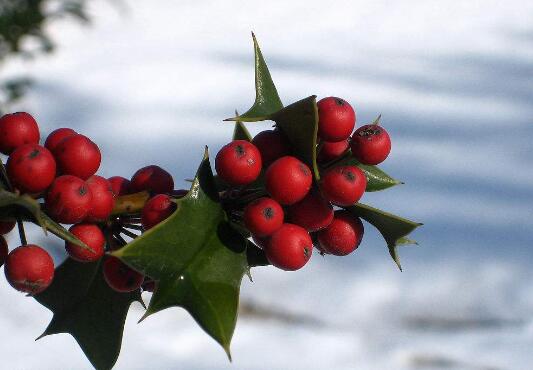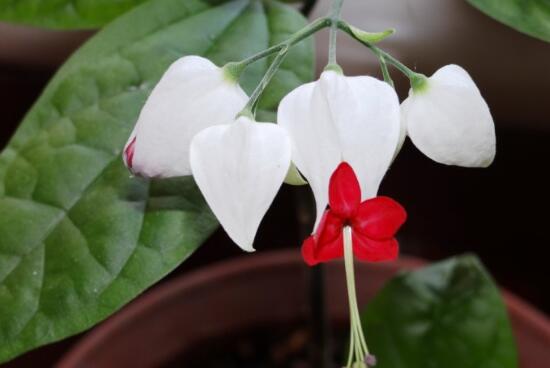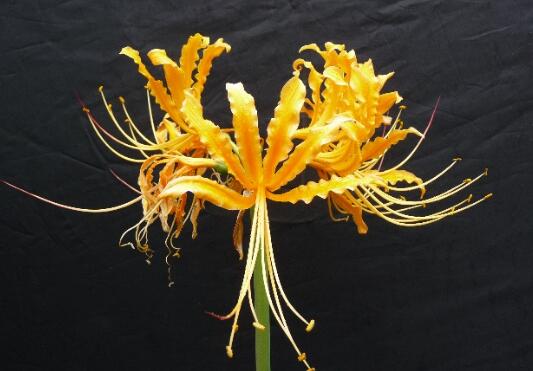How to propagate holly, the propagation method of holly / sowing propagation / cutting propagation
Holly is a world-famous ornamental flower plant, which is cultivated all over the world, but with more people breeding, people are more concerned about its reproduction. How to reproduce holly? What are the breeding methods of holly? Next, the editor will take you to learn about it.
How to propagate, sow / cut holly

When it comes to how to reproduce holly, in fact, it can be divided into two methods: sowing reproduction and cutting propagation. As long as they are operated properly, the survival rate of the two methods of reproduction is very high. As for the specific operation of the two methods of reproduction, there is a detailed introduction below, interested friends can learn about it.
Second, the propagation method of holly (sowing and propagation)
1. Sowing time, spring
When we sow and reproduce holly, it is very important to choose a suitable time. When it comes to the most suitable time to sow holly, we can choose this time in spring every year, preferably before March. Because the climate at this time is more suitable for its growth, so the survival rate will be relatively higher.
two。 Seeds are precipitated and soaked in warm water.
Before we sow and propagate holly, we first have a preliminary work, that is, to urge the seeds of holly. Generally, the seeds can be soaked in warm hot water for about 24 hours, and when the seeds begin to swell, they can be taken out and planted, so that the seeds can germinate more easily and more quickly.
3. Sowing method, covering soil 1-2cm
When we plant holly, we can first add an appropriate amount of base fertilizer to the substrate, and then sow the seeds evenly on the soil surface, and after sowing, we can water them with 1-2cm soil, but we'd better not water them directly when watering, so as not to wash the seeds away. We can use the soaking pot method to water, put the flowerpot into the water 1/2, let the water slowly soak up on it.
Third, the propagation method of holly (cutting propagation)
1. Selection of cuttings, sturdy branches
Before we carry on the cuttage propagation to holly, we must first select the cuttings, the selection of cuttings will directly affect its survival rate, so generally it is best to choose the branches with strong growth and no diseases and insect pests as cuttings, the length of cuttings is 6~8cm, cut off the lower leaves, leaving only Lob2 leaves for cutting.
two。 Cuttage method, rooting in a month
Generally speaking, it is best for us to cuttage holly in the rainy season. Before cutting, we can use chopsticks to cut a hole in the substrate, and then insert the cuttings into 1 pedicle 2, which can avoid damage to the cuttings and is very practical. After that, the cuttings can take root after being watered through for about a month.
3. Follow-up management, pay attention to water and fertilizer management
After the cuttings take root, we can declare that the cuttings are successful, and then we can carry out follow-up conservation, and there are also many points that need to be paid attention to in maintenance, such as watering, fertilization and so on. If you don't know how to raise it, you can refer to the article on the breeding methods of holly, which has detailed teaching.
Cutting propagation of French holly the propagation of French holly is mainly by cutting, and it can also be sown and propagated. Cutting propagation is not only simple and easy, but also takes root quickly and has a high survival rate, so it is widely used in production. French holly cutting nursery bed should choose the land with high topography, deep soil layer, loose soil and good drainage and irrigation. After removing grass roots and stones, a high border of about 1.2m was formed and poured with 1000 times of imidacloprid and 1500 times of mancozeb to remove underground pests and harmful germs. After leveling the nursery bed, flatten it with a spade, pour 10% rotting rare human feces and urine, and then cover the bed with a layer of sifted coke ash or yellow soil, about 5 cm thick. French holly cuttage can be carried out all the year round, and it is most suitable for late spring and early summer and early summer and early autumn. Cutting in winter should do a good job of heat preservation of seedling bed. Cuttings selected young or strong mother trees with well-developed one-year-old sturdy branches are the most likely to survive. After cuttings are collected, cutting and cutting should be carried out in a cool leeward place, and the knife and scissors should be sharp. When cutting, the branches that have grown branchlets are cut off along 0.5 cm above and below the nodes, and then the stem nodes are cut into two halves according to the location of the branchlets, and the branches that do not grow branchlets must be cut into 2 nodes. The upper end is cut into a flat section with a meter above the bud, and the lower end is cut into a horseear-shaped or flat section 0.5 cm from the bud. After cutting the cuttings, dip them in 500ppm tea acetic acid or 200ppmABT rooting powder for 5 seconds, then cover them with wet straw or wrap them with agricultural film to prevent drying. French holly cuttings should be shallow rather than deep, branchlet cuttings should be cut down, and the depth should be 1 cm in the mother plant; the depth of big branch cuttings is 1 cm in the upper middle of the next stem node, and the cuttings are tilted to about 45 degrees with the ground. Shallow oblique cutting is conducive to the early rooting and survival of cuttings. After cutting, the soil around the cuttings should be compacted and watered once, so that the lower part of the cuttings is close to the soil. The row spacing of cuttings is generally 12 Mel 15 cm, and the plant spacing is 6 mi 8 cm. When cutting, the leaves on the cuttings should not be left too much, nor should they be completely cut off. The lower leaves can be completely cut off with the petioles, and the upper leaves can be left with 2 leaves. According to the size of the leaves, each leaf should be cut slowly by 2 to 2 times, so as to reduce the excessive consumption of water and nutrients. French holly is required to set up a shed for shade after cutting in order to reduce transpiration and direct sunlight on the seedbed. When cutting in early spring or late autumn, it should be covered with film to prevent winter damage. After cutting, the soil of the seedling bed should be watered frequently to keep the soil moist and the soil on the surface of the seedling bed should not show whiteness. Topdressing of cutting seedlings can be combined with watering, or foliar spraying can be carried out with phosphoric acid: potassium hydrogen plus urea. The weeding work should be very meticulous and do not collide with cuttings. French holly has strong stress resistance, few diseases and insect pests, and occasional occurrence of diamondback moth or aphids. It can be propagated by spraying holly with pesticides such as dipterygong and imidacloprid.
Sowing and propagation of holly
The ripe holly fruit is harvested in autumn, peeled and washed with clean water. The seeds need to germinate and can be stratified with wet sand at low temperature and sown before March of the following spring. The growth is slow in the seedling stage, so attention should be paid to maintenance and management. If holly seeds are not treated by accelerating germination, they often have to germinate every other year.
Cutting Propagation of Holly
The cutting of holly can be carried out in all four seasons, which is suitable for late spring and early summer and early summer and early autumn. Generally choose to carry out softwood cuttings in the rainy season, the cuttings are 6 to 8 cm long, remove the lower leaves, retain 1-2 leaves and cut short, insert 1 to 2, use sandy soil as the matrix, set up a shed for shade after insertion, often spray water, keep the soil moist, and take root in about a month.
Matters needing attention in reproduction of holly
After the seedlings have been cultivated in the nursery for 3 years, they can be transplanted and planted, and the best choice for transplanting is in spring. Be careful when digging seedlings to avoid root damage and transplant with soil. At the beginning of planting, we should do well in ploughing and weeding, watering reasonably and strengthening management. In addition, holly is vulnerable to white wax and soot disease, so pay attention to timely prevention and control.
After holly cutting, need to set up a shed for shade, reduce transpiration and weaken the direct sunlight seedbed at the same time. If cuttage is carried out in early spring or late autumn, it is necessary to cover with film to prevent winter damage. Frequent watering is needed after cutting to keep the soil moist. Topdressing of cutting seedlings can be combined with watering, or foliar spraying can be carried out with phosphoric acid: potassium hydrogen plus urea. Weeding should be done carefully to avoid colliding cuttings.
- Prev

How to reproduce dragon spitting beads? two propagation methods of dragon spitting beads (sowing / cutting)
For people who love flowers, dragon spitting beads must be no stranger, its white calyx, bright red Corolla, shaped like a swimming dragon spitting beads, looks extremely beautiful. In life, many people raise a pot of dragon spitting beads at home, but is a pot of dragon spitting beads too monotonous? It's time to breed a pot yourself.
- Next

Suddenly laugh how to reproduce, suddenly laugh the breeding method / mainly to divide the ball
Sudden smile is a common flower plant in people's life, and it can be seen all over the country. With more and more people raising it, people are more concerned about its reproduction. About how to reproduce sudden laughter? What are the breeding methods of laughing suddenly? Next, the editor will take you to learn about it.
Related
- Fuxing push coffee new agricultural production and marketing class: lack of small-scale processing plants
- Jujube rice field leisure farm deep ploughing Yilan for five years to create a space for organic food and play
- Nongyu Farm-A trial of organic papaya for brave women with advanced technology
- Four points for attention in the prevention and control of diseases and insect pests of edible fungi
- How to add nutrient solution to Edible Fungi
- Is there any good way to control edible fungus mites?
- Open Inoculation Technology of Edible Fungi
- Is there any clever way to use fertilizer for edible fungus in winter?
- What agents are used to kill the pathogens of edible fungi in the mushroom shed?
- Rapid drying of Edible Fungi

